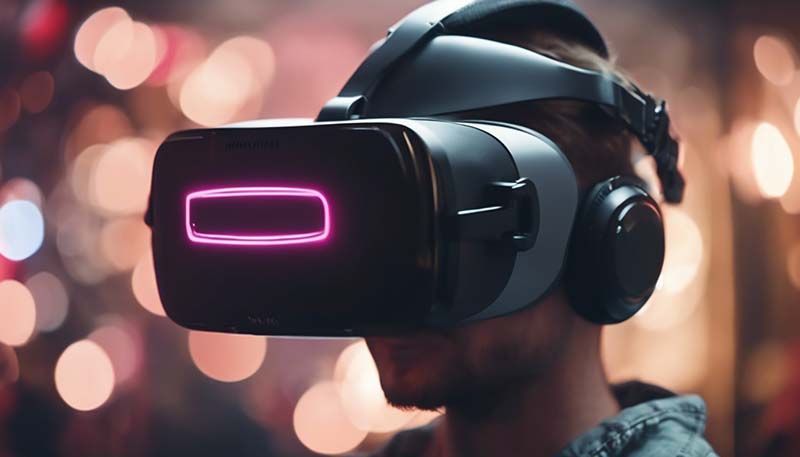The Future of Virtual Reality in Gaming
As we stand on the precipice of technological innovation, virtual reality (VR) in gaming is poised to redefine the way we interact with digital worlds. This article delves into the future landscape of VR gaming, exploring the advancements that are set to transform the industry and the experiences they will bring to players around the globe.
Current State of VR Gaming
The introduction of consumer VR headsets like the Oculus Rift, HTC Vive, and PlayStation VR marked the beginning of a new era in gaming. These devices have provided immersive experiences that were once the stuff of science fiction, but despite their successes, the technology has yet to reach its full potential.
Advertisement
Technological Advancements
The future of VR in gaming hinges on several key technological advancements:
- Resolution and Field of View: As display technology improves, we can expect higher resolutions and wider fields of view, which will make virtual worlds feel more real and less like looking through a window.
- Motion Tracking and Haptic Feedback: Advances in motion tracking will lead to more accurate and intuitive interactions within games. Haptic feedback will also become more nuanced, providing a greater sense of touch.
- Wireless Connectivity: The removal of cables will allow for greater freedom of movement, enhancing the immersion of VR experiences.
- Eye Tracking and Foveated Rendering: Eye tracking can personalize the visual experience and reduce the computational load, leading to more efficient rendering and smoother gameplay.
- Artificial Intelligence: AI will play a significant role in creating dynamic, responsive game worlds that adapt to player actions, making each gaming session unique.
Impact on the Gaming Community
As VR becomes more accessible and affordable, it will attract a wider audience. The social aspect of gaming will also evolve, with players being able to share experiences in virtual spaces, fostering new types of communities.
Challenges and Considerations
Despite the exciting prospects, there are challenges that need to be addressed:
- Cost: High-quality VR systems are still expensive, which limits accessibility.
- Motion Sickness: Developers need to find solutions to prevent motion sickness, which can be a barrier to entry for some users.
- Content Creation: There is a need for more diverse and engaging content to keep players interested in VR gaming.
- Privacy and Safety: As with any technology, privacy and safety concerns must be addressed, especially as VR becomes more integrated into daily life.
Intersection with Other Entertainment Forms
VR is not just for gaming; it's set to intersect with other forms of entertainment. Social VR platforms and the concept of the metaverse are areas where VR can redefine how we socialize, work, and play.
Storytelling in VR
The future of storytelling in VR games will be more immersive and interactive. Developers are exploring new narrative techniques that leverage the unique capabilities of VR, allowing players to become active participants in the story rather than passive observers.
Conclusion
While the future of VR in gaming is promising, it's a journey that requires continuous innovation, investment, and a commitment to solving the unique challenges that come with this technology. As developers and players alike push the boundaries of what's possible, we can expect VR to become an increasingly integral part of the gaming landscape.
References:
[1] Virtual Reality Market by Component (Hardware, Software, and Services), Device (Headsets and Accessories), Application (Gaming, Education and Training, Medical, and Real Estate), and Geography - Global Forecast to 2023. MarketsandMarkets.
[2] The State of Virtual Reality in 2021. VentureBeat.

[3] The Future of Virtual Reality: How VR Will Change Our Lives. Forbes.